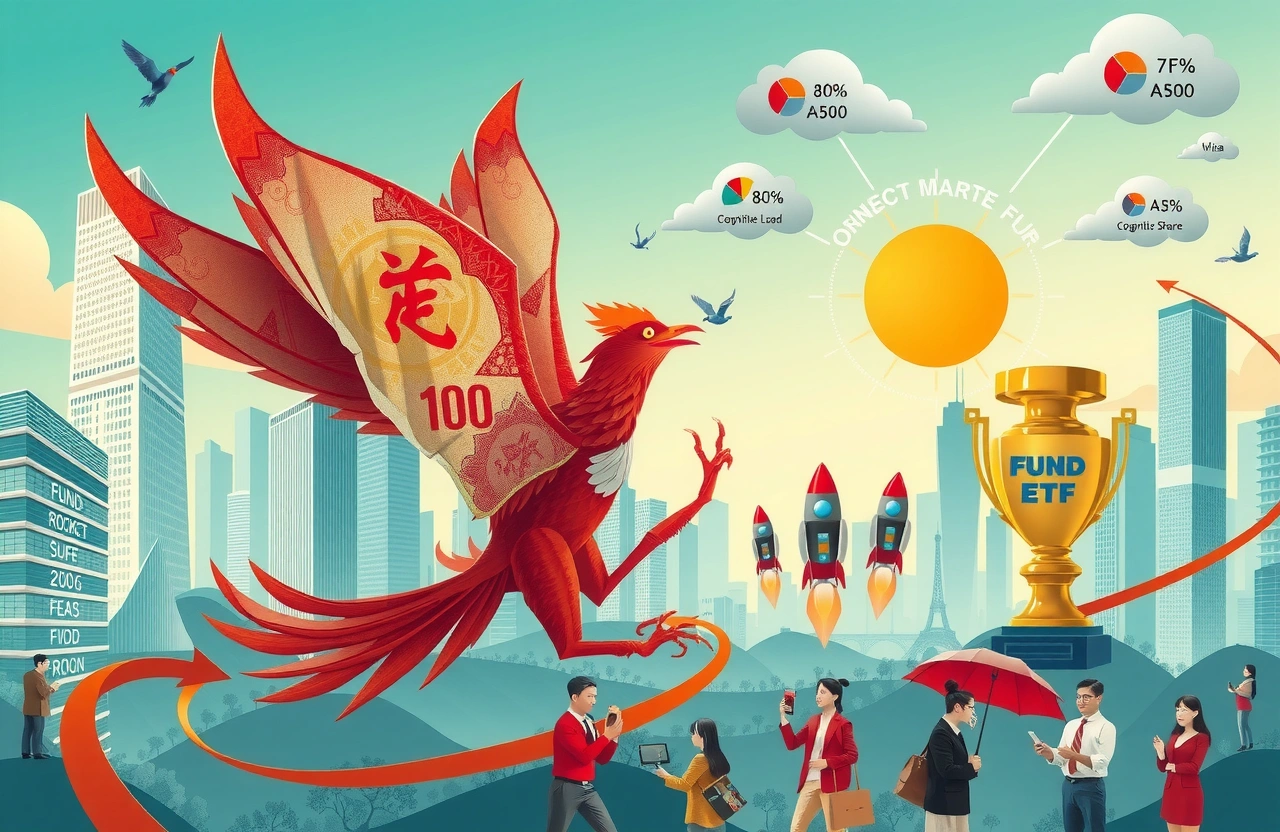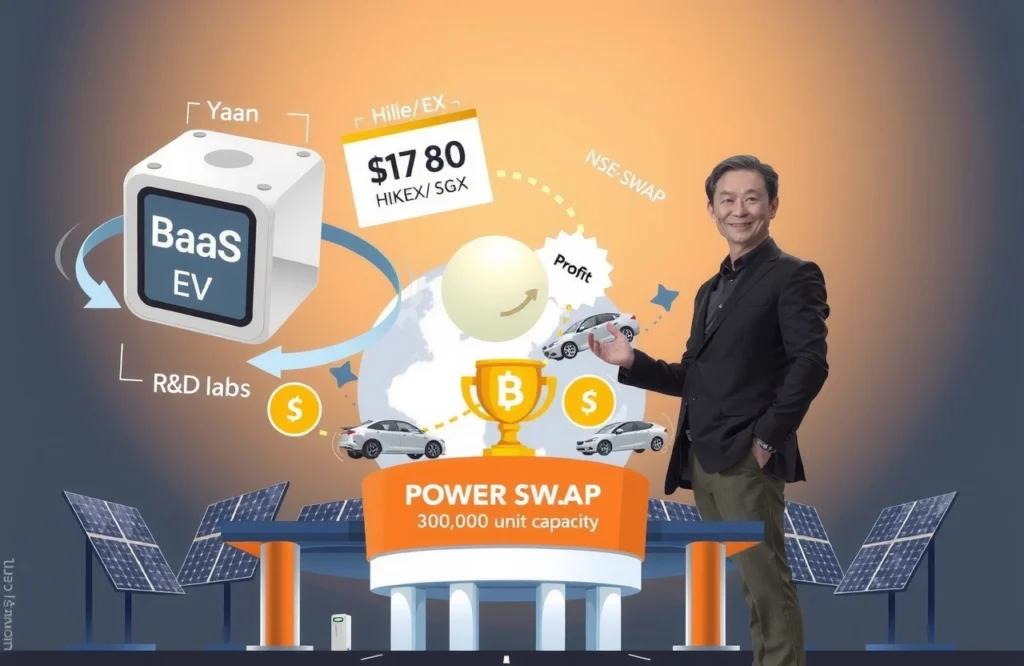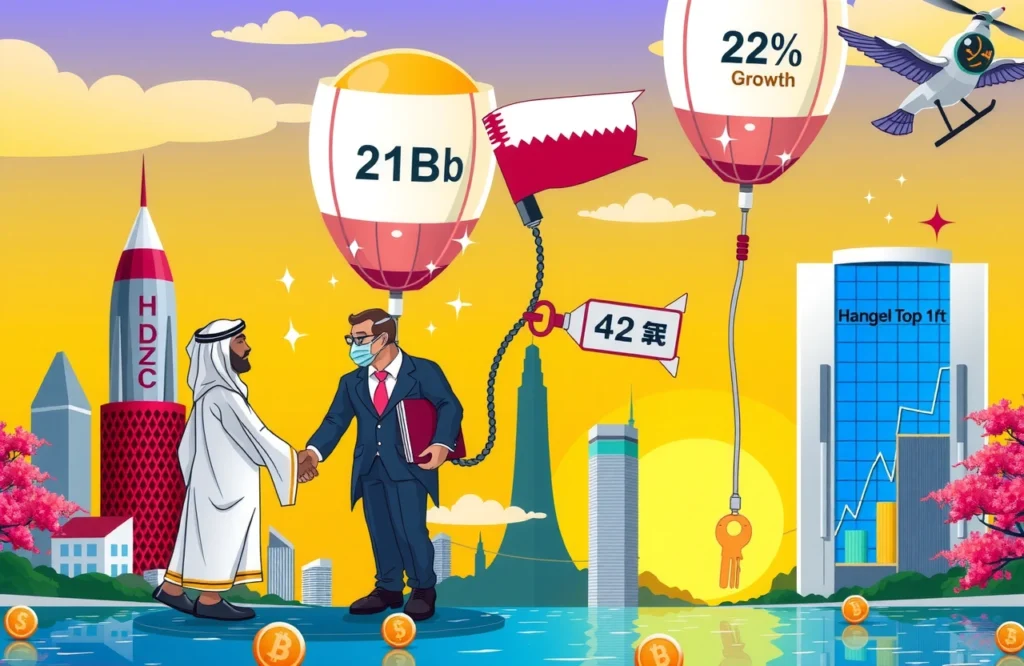Key Developments Reshaping China’s ETF Landscape
- China’s ETF market exceeds $550 billion (RMB 4tn) with top 10 managers controlling 80% share
- Shift from product-focused competition to investor-centric solutions marks industry transition
- Major players deploy new strategies: ChinaAMC’s “Red Rocket” platform, Harvest’s “Super ETF” rebranding
- Fee wars give way to brand building and educational ecosystems
- Intense competition emerges in bond ETFs following successful RMB 131.4 billion credit ETF launch
Evolutionary Pressures Reshape Market Dynamics
The exchange-traded fund arena in China now constitutes a staggering RMB 4 trillion ($550 billion) battlefield. Recent bond ETF launches demonstrate escalating competition, with ten major institutions including ChinaAMC, E Fund and Harvest Fund simultaneously marketing science innovation bond ETFs. Seven competitors shortened fundraising periods to just one day with RMB 3 billion ($420 million) caps.
The landmark RMB 131.4 billion ($18.1 billion) benchmark credit ETF debut demonstrates the explosive growth potential. However, industry consolidation grows increasingly evident. Wind Data analysis reveals the top ten ETF providers collectively manage RMB 3.32 trillion ($457 billion), commanding 80% market share while smaller players face existential challenges.
Morningstar analyst Cui Yue (崔悦) observes: “Scale advantages grant dominant players unbeatable cost structures and liquidity moats. Smaller managers face systematic barriers competing directly in core index products.” This Darwinian pressure catalyzes strategic innovation as leading firms transition beyond product proliferation toward differentiated ecosystems.
Redefining Competitive Advantages
Platforms Replacing Products as Primary Interface
The most fundamental shift involves transforming investor relationships through digital ecosystems:
ChinaAMC recently upgraded its “Red Rocket” service to an ETF research platform exceeding 10 million users. The firm emphasizes this isn’t a sales channel but an educational portal enabling informed investment decisions. Its recently launched “investment achievement assessment framework” helps investors quantify portfolio outcomes.
Brand Reinforcement Through Naming Strategies
Huatai-PineBridge intensified branding of its flagship products, recently renaming its top-performing A-share ETF as “A500ETF Huatai-PineBridge.” While maintaining heavyweight products like its RMB 70 billion ($9.6 billion) CSI 300 ETF, the firm prioritizes signature positioning through consistent visual identity.
Meanwhile E Fund standardized ETF naming conventions across its 100+ products, classifying funds into four intuitive categories: broad-based, sector, thematic and factor strategies. Spokesperson Lin Kun (林坤) explains: “Standardization reduces investor cognitive load in selection processes while aligning with regulatory emphasis on consumer protection.”
The Solution Provider Transition
Industry Crosses Strategic Threshold
Cui Yue describes the industry inflection point: “We’re transitioning from ETF 1.0’s product-centric tools to ETF 2.0’s solution ecosystems.” Major institutions now compete less on underlying index composition and increasingly on ancillary services:
- Educational ecosystems converting knowledge into trust
- Personalized portfolio construction frameworks
- Behavioral coaching reducing emotional trading
- Simplified interfaces lowering analytical burdens
Cui Yue elaborates: “Traditional competition centered on functional advantages like fees or novelty. The emerging paradigm addresses psychological barriers – explaining why investors should choose specific products and remain committed during volatility.”
Concrete Implementation Cases
E Fund launched its “Future is Now” initiative categorizing six thematic investment buckets including robotics and intelligent devices. Similarly, ChinaAMC introduced AI-powered portfolio diagnostics within Red Rocket.
Harvest Fund established its “Super ETF” sub-brand featuring integrated advisory services through programs like “SuperIndex Advocate,” creating collaboration frameworks with financial advisors. Its “Super KaBei” mini-program provides real-time investment signals alongside stock-to-ETF matching functionality.
Architecting Sustainable Moats
Beyond Marketing: Substantive Differentiation
ETF providers employ distinct approaches for lasting advantage:
GF Fund pioneered “EASY ETF” focusing on simplified portfolio construction, while Bosera promotes “Index Expert” framing ETFs as comprehensive asset allocation instruments. Peng Cheng Fund positions its “AShares” brand as systematic solutions provider particularly for STAR Market exposure.
Most creatively, Invesco Great Wall anthropomorphizes products – its Nasdaq tech ETF is personified as a friendly “Corgi” while dividend strategies become placid “Capybaras.” This psychological bridging helps investors comprehend abstract strategies.
Cultivating Authentic Investor Connections
Shanghai-based industry consultant Ma Ting (马婷) emphasizes authenticity: “Sustainable branding interweaves substantive product features like tax efficiency or liquidity with consumer experience. Entertainment formats risk trivialization when detached from actual investment propositions.”
Morningstar’s Cui Yue identifies critical pitfalls including:
- Prioritizing viral reach over knowledge retention
- Premature promotion before consumer education
- Over-engineering complexity confusing target users
- Distorting risk/reward realities
Strategic Implications and Forward Pathways
Managers contemplating strategic shifts should consider several disciplines:
Product strategization demands either algorithmic differentiation (smart-beta methodologies demonstrating persistent outperformance) or modular construction enabling custom solutions. Educational architectures must translate technical jargon into behavioral guidance through sequential learning campaigns.
The Investor-Centric Imperative
The ETF ecosystem’s evolution ultimately serves investor needs:
Whereas previous competition centered on institutional specifications, contemporary strategy must address retail behavioral tendencies. Platforms like Red Rocket succeed by transforming intimidating statistical models into intuitive visualizations.
Two enduring principles emerge:
- Every interface should simplify complexity
- Each communication must advance understanding
Navigating the Next Development Phase
For fund companies:
- Migrate from product manufacturing toward financial education infrastructure
- Institutionalize investor insight feedback loops beyond superficial surveys
- Develop platform stickiness through proprietary behavioral analytics
- Validate differentiation claims through transparent performance benchmarking
For investors:
- Evaluate providers by educational depth alongside performance metrics
- Prioritize fund companies publishing behavioral research insights
- Analyze portfolio diagnostics sophistication
- Monitor platform integration across advisory channels
The competitive moat reconstruction does not entail abandoning core indexing competencies but rather embedding them within comprehensive wealth-creation journeys. Institutions mastering this integration will ultimately develop client relationships resilient to fee-based competition. This evolution represents not merely tactical adaptation but necessary maturation for China’s $550 billion ETF arena.




